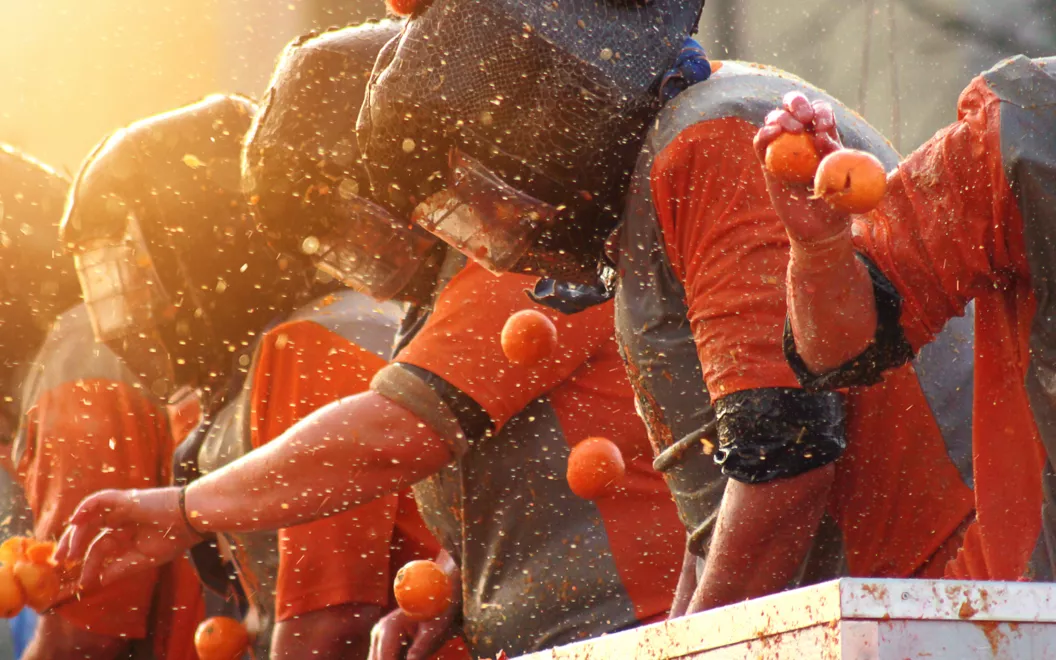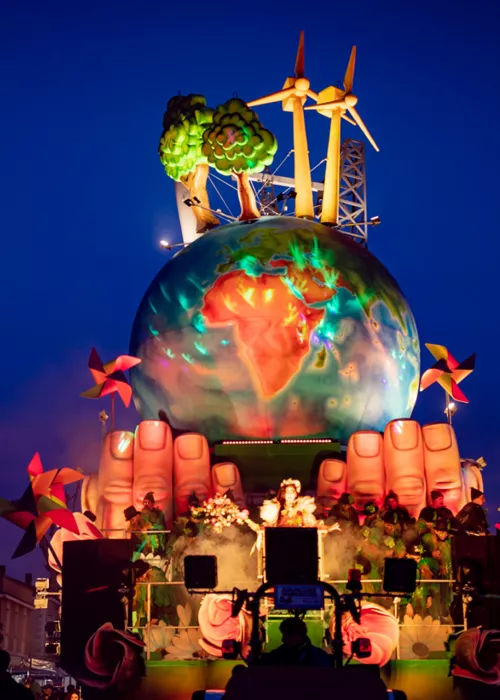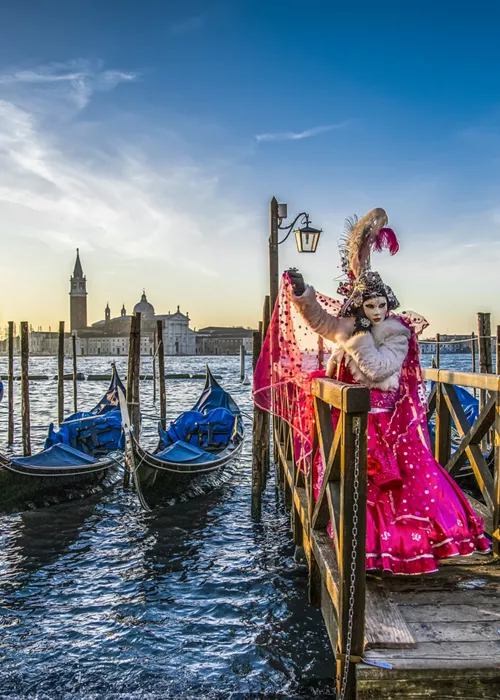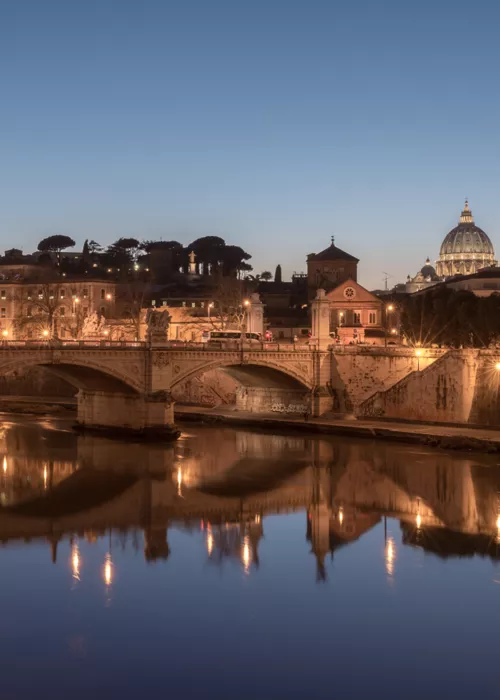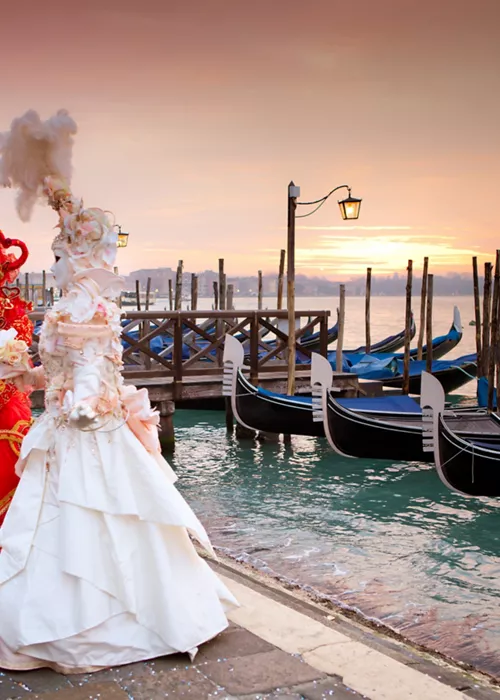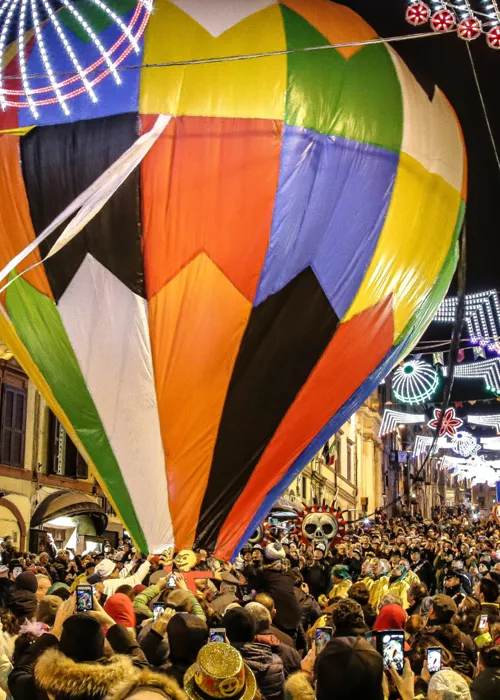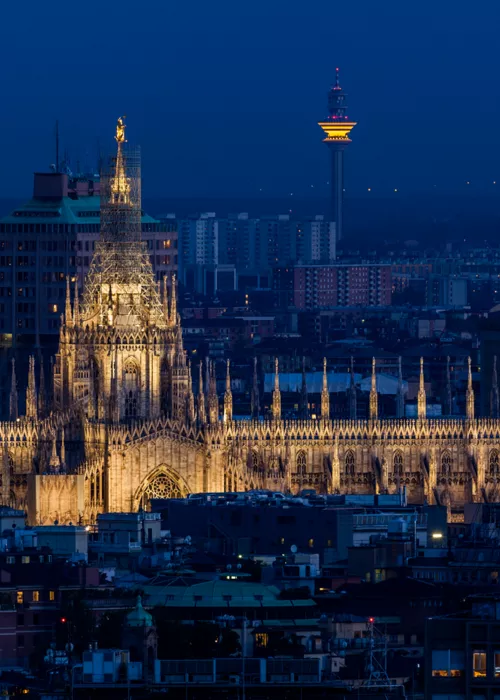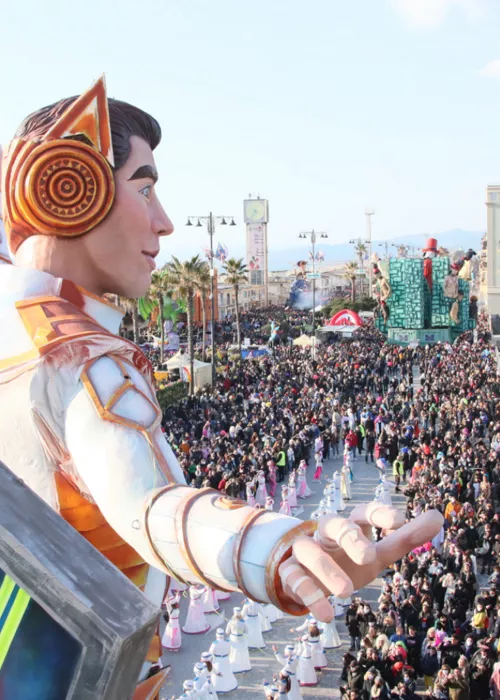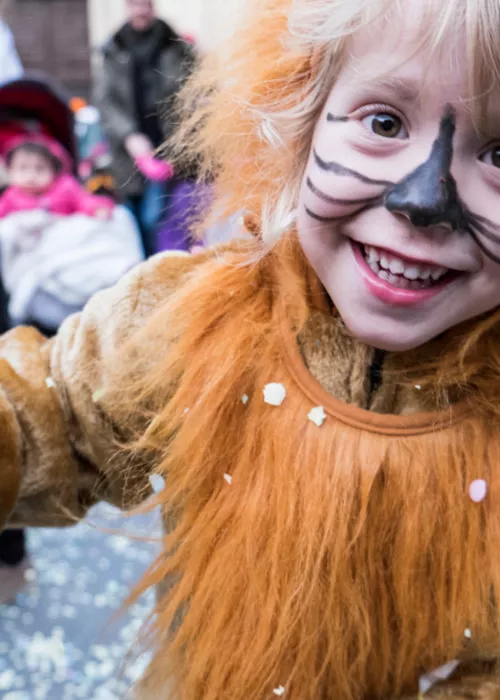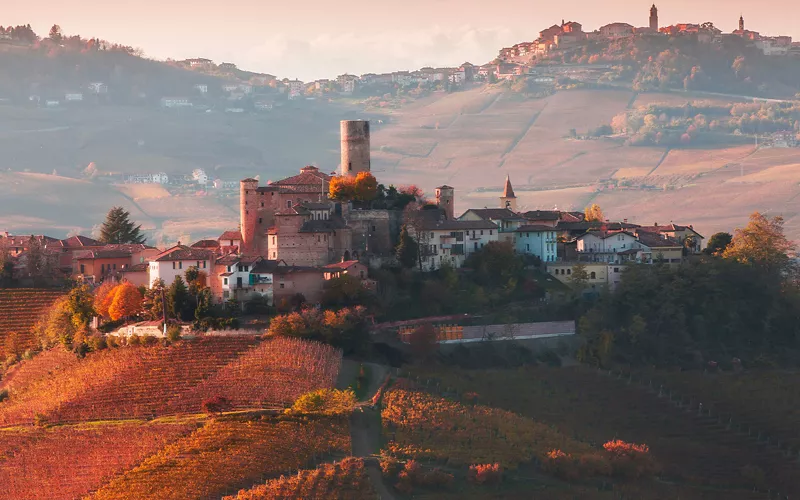Everything you need to know about the Ivrea Carnival, the oldest in Italy
3 minutes
Among the festivals and traditions of the Piedmont region, there is a unique event that combines history and legend: the Ivrea Carnival, the oldest in Italy. The event, with a strong symbolic value, engulfs the squares of the city centre with a distinct ceremony, including the spectacular Battle of the Oranges.
Would you like to participate in the Italian event of international standing? Here are a few ideas to help you plan your trip in the best way possible, with some hints on the origin of Carnival in the Canavese city and some suggestions for what to eat.
The history of the Ivrea Carnival: a genesis of struggle and freedom
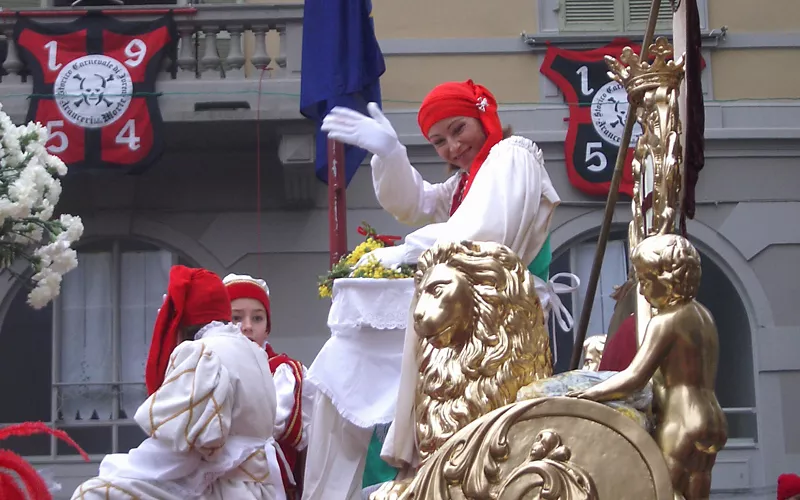
The origins of the historic Carnival of Ivrea date back to the Middle Ages. The undisputed protagonist is the Vezzosa Mugnaia, or Violetta, a heroine and symbol of freedom. According to legend, the brave maiden liberated the people from tyranny by killing the Marquis of Monferrato, who starved the city and forced young brides to the ius primae noctis. The miller first seduced the nobleman, then she rebelled on the night of the encounter, cutting off his head with his own sword and initiating the popular uprising.
Other prominent figures are the General, of Napoleonic origin, and the Podestà, the representative of the city's power. They accompany the Mugnaia in the procession, amidst fifes and drums, alongside citizens and visitors wearing the Berretto Frigio, the hat of revolt.
Credits photo: Laurom
The Ivrea Battle of the Oranges, a popular tradition and a real competition
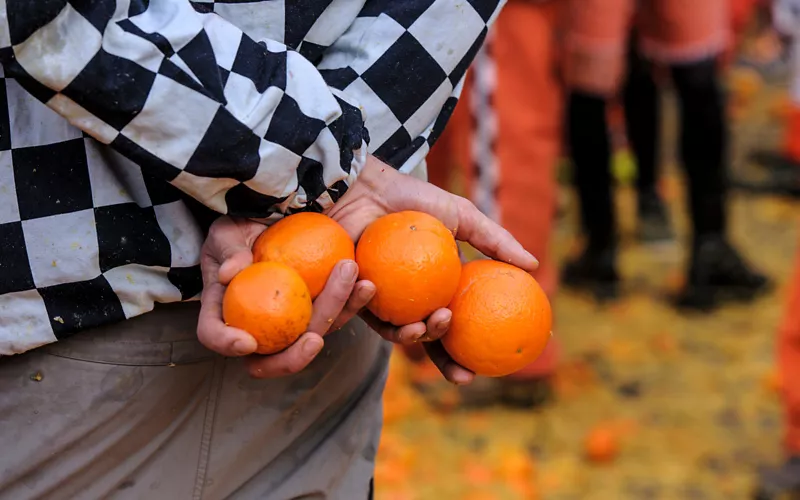
From Sunday to Shrove Tuesday, the spectacular Battle of Oranges, a representation of the popular revolt against the tyrant's armies, takes place in the city's main squares. It lasts for three afternoons and involves teams on foot, unprotected, and those on carts, shielded by leather helmets, competing to the sound of throwing oranges.
The battle takes place in the city's main squares, with a final prize-giving ceremony, awarded by a special committee to the teams that have most excelled in terms of ardour, technique and loyalty. For the Carnival, 7,000 quintals of oranges are brought to the city, from companies in Calabria and Sicily that are actively involved in the fight against the mafia.
Ivrea Carnival floats are works of art
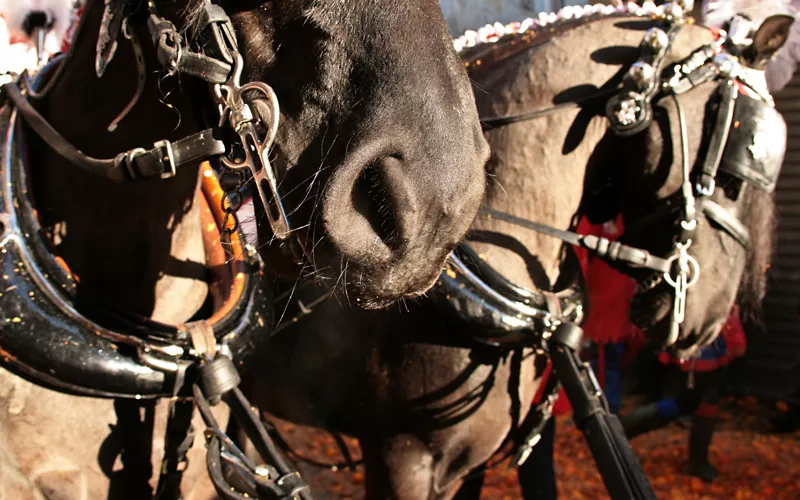
There are many allegorical floats on parade during the Ivrea Carnival, from the golden float on which the Vezzosa Mugnaia appears - surrounded by her bridesmaids and accompanied by pages and attendants, who help her throw sweets and mimosas - to those that carry the henchmen serving the tyrant. The latter are the so-called Throwing Carts, picturesquely decorated, drawn by pairs or quadrilles of horses and poised to support the weight of 10 to 12 orange-throwers, all wearing heavy padding and with their faces protected by terrifying leather masks and iron mesh. There are about 200 horses, and the precious harnesses of the floats are made by master craftsmen.
The Ivrea Carnival teams
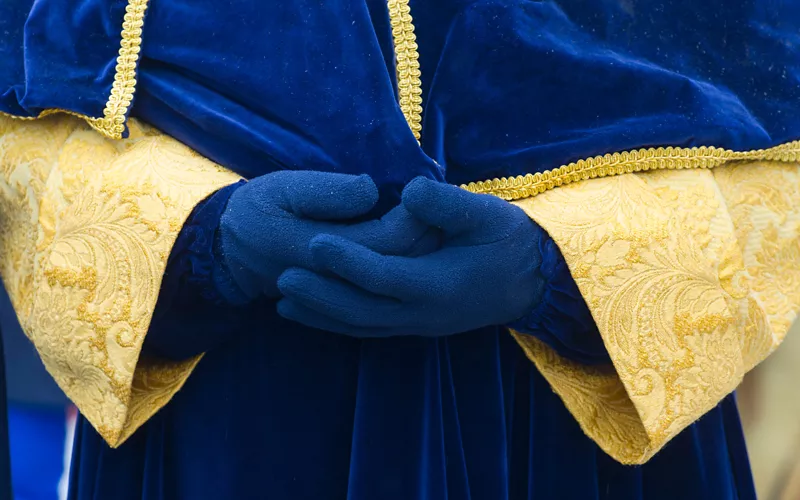
The first teams of aranceri (orange-throwers) on foot, ready to do battle in the Ivrea Carnival, were officially formed immediately after the Second World War, in the Olivetti workers' district: they were the Asso di Picche (Ace of Spades) aranceri, followed by the Morte (Death), Scorpioni d'Arduino (Scorpions), Tuchini (Tuchini), Scacchi (Chess), Pantere (Panthers), Diavoli (Devils), Mercenari (Mercenaries) and Credendari (Governors) teams.
Each team on foot consists of hundreds of men and women, ready to attack the opponents passing by on the cart with oranges. They wear colourful outfits, with bells on their ankles and tunics tied at the waist and half-open at the front, so that they can hold a large quantity of citrus fruits. They are completely exposed to the attacks of their enemies, because they are unprotected.
The typical products of Ivrea are a real treat

If you are wondering what people eat at Carnival in Italy and what the typical foods are, read on. In the stands you will find canestrelli, traditional biscuits from Canavese and Val di Susa, of ancient mediaeval tradition, and friciò, Carnival sweets that are widespread throughout the Piedmont region; they are similar to castagnole (sweet, round fritters), but filled with sultanas.
In the city districts you will be intoxicated by the scent of fagiolate (beans), from the tofeja canavesana, a soup that takes its name from the terracotta terrine in which it is cooked, to the faseuj grass, the fat beans of Ivrea, cooked for a very long time - around six hours - inside large copper pots, along with pork rinds, cotechini, pig's trotters, pork bones, lard and onions. To finish, try a nice plate of polenta and cod.

